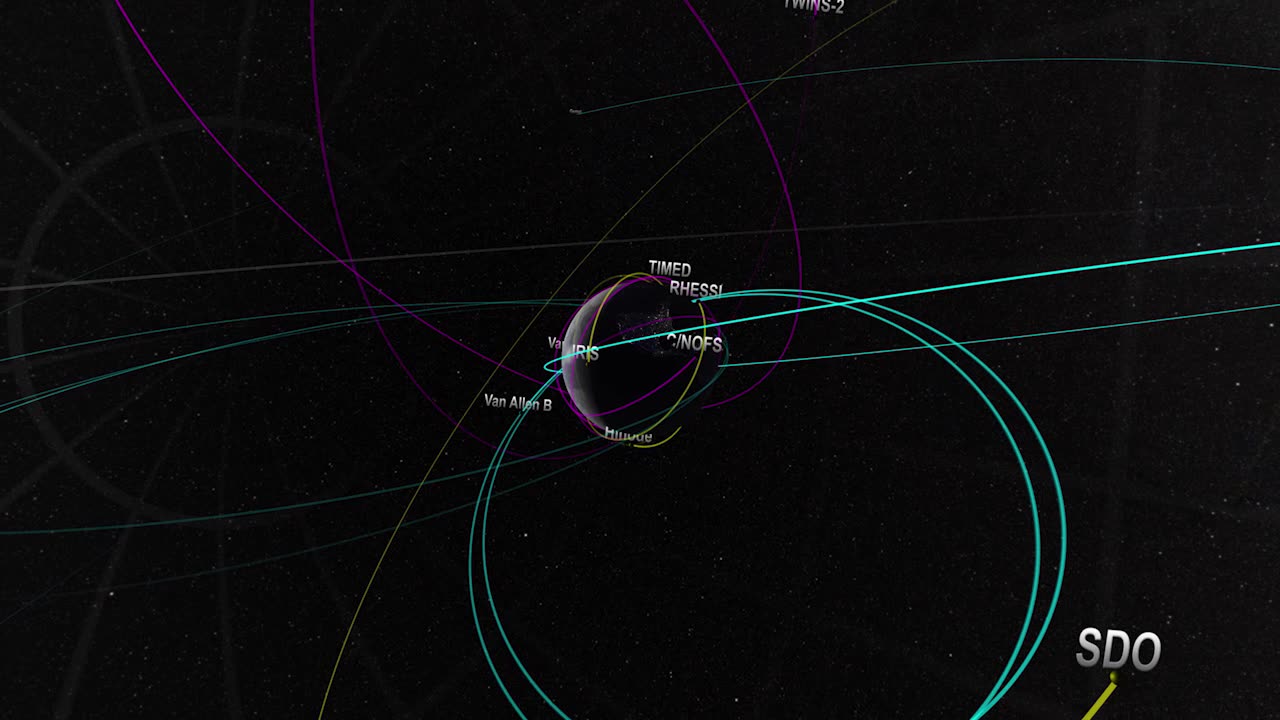Premium Only Content

SYNTHESIS: NASA DATA VISUALIZATIONS IN ULTRA-HD (4K)
The solar system? Big. The galaxy? Bigger. What's bigger than that? Before you smugly suggest "The universe?", check this out: 4K Videos from NASA!
A little more than a decade ago, television transformed from the boxy, standard definition dimensions of 20th century engineers to the wider and sharper images of high definition TV. Well into the 21st century now, rapid growth in the next generation of video images promises to deliver spectacular pictures with profoundly greater fidelity and resolution than even the best HDTV. Officially known as Ultra-High Definition Television, it has rapidly come to be known as "4K", a moniker derived from the approximate width of images measured in pixels horizontally across a screen.
NASA has a long legacy pushing the boundaries of advanced media technologies, befitting its unique role in presenting important, state-of-the-art science and engineering stories to the American public. On this web page you'll find the first major release of 4K video content, presented in the public domain. The release of these media are concurrent with the launch of a new, non-commercial Ultra-High Definition channel in partnership with Harmonic.
For each of the following items on this website you may preview the program in your browser or you may select one of several different resolutions from the "download" button in the lower right hand corner of each. Be advised that the 4K videos will require fast internet connections and substantial storage space.
When we feel The Earth beneath our feet, see it with our eyes, hear it when the wind blows, we perceive only the most obvious filaments of a far more complex place. Only with exquisite machines--spacecraft in orbit and powerful computers on the ground--can humanity begin to uncover the elegant nature of our complex home.
Presented here are a collection of data visualizations based on observations gathered by a fleet of spacecraft. In various depictions we see the currents of the world's oceans, changes in temperature and land cover over time, and precipitation as it cycles energy and water around our living planet.
But The Earth is only one part of a dynamic sphere, and with its companion The Moon nearby, we cannot hlep but remeber that our whole planet travels in a wider ocean. This video presents Earth's Moon with data gathered by the remarkable Lunar Reconnaissance Orbiter, an advanced probe designed to map our planetary companion in unprecedented detail.
Finally, our place in space would be cold and lifeless if it were not for our omnipresent star, The Sun. Shining ceaselessly in the void, it bathes our home planet in life giving energy, and holds The Earth, The Moon, and everything else in the solar system in its gravitational thrall.
The data used in the creation of this video come from a wide range of spacecraft, all part of NASA's broader Science Mission Directorate.
Credit: Michael Starobin, Producer
All data visualizations provided by the Scientific Visualization Studio
-
 1:28:13
1:28:13
Tucker Carlson
4 hours agoJonathan Roumie: The Weight of Playing Jesus in the Chosen, & Why You Should Observe Lent
103K54 -
 LIVE
LIVE
Film Threat
19 hours agoDAREDEVIL: BORN AGAIN ARRIVES! | Hollywood on the Rocks
151 watching -
 LIVE
LIVE
The HotSeat
1 hour agoIs The American Family Going Extinct??
800 watching -
 1:04:31
1:04:31
Ben Shapiro
5 hours agoEp. 2151 - Trump’s HOME RUN State of the Union!
73.1K49 -
 2:06:31
2:06:31
Right Side Broadcasting Network
5 hours agoLIVE REPLAY: White House Press Secretary Karoline Leavitt Holds Press Briefing - 3/5/25
103K65 -
 1:16:50
1:16:50
Simply Bitcoin
5 hours ago $4.41 earnedBLACKROCK'S GAME CHANGING BITCOIN REPORT Creates $900T of FOMO? | EP 1195
41.7K3 -
 1:00:23
1:00:23
The White House
4 hours agoPress Secretary Karoline Leavitt Briefs Members of the Media, Mar. 5, 2025
54.8K27 -
 23:34
23:34
marcushouse
15 hours ago $1.37 earnedWhat Really Happened to Starship? The Full Story! 🚀
29.6K5 -
 16:55
16:55
T-SPLY
9 hours agoMSNBC Used A Child Brain Cancer Survivor To Make Donald Trump Look Bad
32K42 -
 1:03:31
1:03:31
Russell Brand
6 hours agoScripted Opposition? Democrats’ Viral Attack Video Drops as Trump Dominates Congress – SF548
124K87